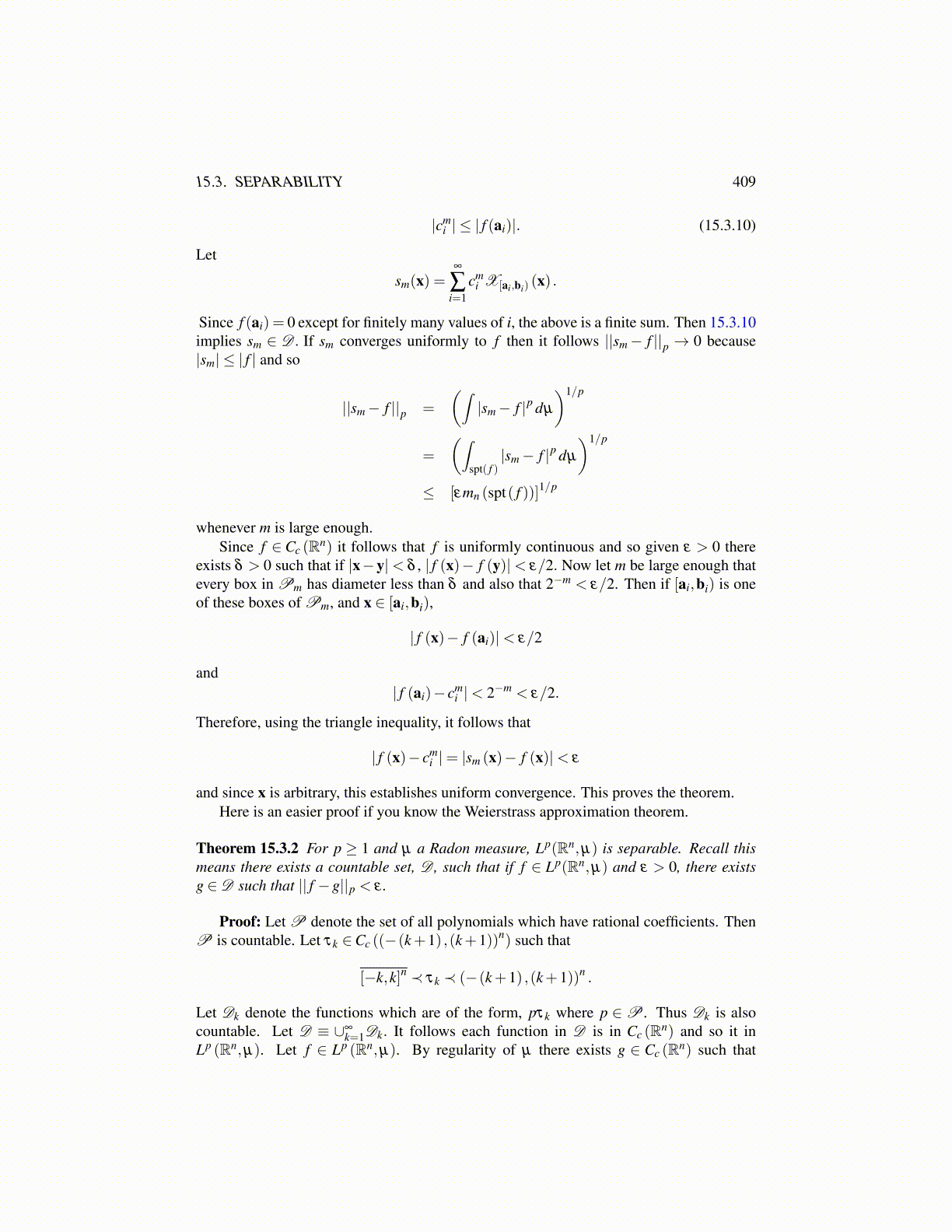
15.3. SEPARABILITY 409
|cmi | ≤ | f (ai)|. (15.3.10)
Let
sm(x) =∞
∑i=1
cmi X[ai,bi)
(x) .
Since f (ai) = 0 except for finitely many values of i, the above is a finite sum. Then 15.3.10implies sm ∈ D . If sm converges uniformly to f then it follows ||sm− f ||p → 0 because|sm| ≤ | f | and so
||sm− f ||p =
(∫|sm− f |p dµ
)1/p
=
(∫spt( f )
|sm− f |p dµ
)1/p
≤ [εmn (spt( f ))]1/p
whenever m is large enough.Since f ∈ Cc (Rn) it follows that f is uniformly continuous and so given ε > 0 there
exists δ > 0 such that if |x−y|< δ , | f (x)− f (y)|< ε/2. Now let m be large enough thatevery box in Pm has diameter less than δ and also that 2−m < ε/2. Then if [ai,bi) is oneof these boxes of Pm, and x ∈ [ai,bi),
| f (x)− f (ai)|< ε/2
and| f (ai)− cm
i |< 2−m < ε/2.
Therefore, using the triangle inequality, it follows that
| f (x)− cmi |= |sm (x)− f (x)|< ε
and since x is arbitrary, this establishes uniform convergence. This proves the theorem.Here is an easier proof if you know the Weierstrass approximation theorem.
Theorem 15.3.2 For p ≥ 1 and µ a Radon measure, Lp(Rn,µ) is separable. Recall thismeans there exists a countable set, D , such that if f ∈ Lp(Rn,µ) and ε > 0, there existsg ∈D such that || f −g||p < ε .
Proof: Let P denote the set of all polynomials which have rational coefficients. ThenP is countable. Let τk ∈Cc ((−(k+1) ,(k+1))n) such that
[−k,k]n ≺ τk ≺ (−(k+1) ,(k+1))n .
Let Dk denote the functions which are of the form, pτk where p ∈P . Thus Dk is alsocountable. Let D ≡ ∪∞
k=1Dk. It follows each function in D is in Cc (Rn) and so it inLp (Rn,µ). Let f ∈ Lp (Rn,µ). By regularity of µ there exists g ∈ Cc (Rn) such that